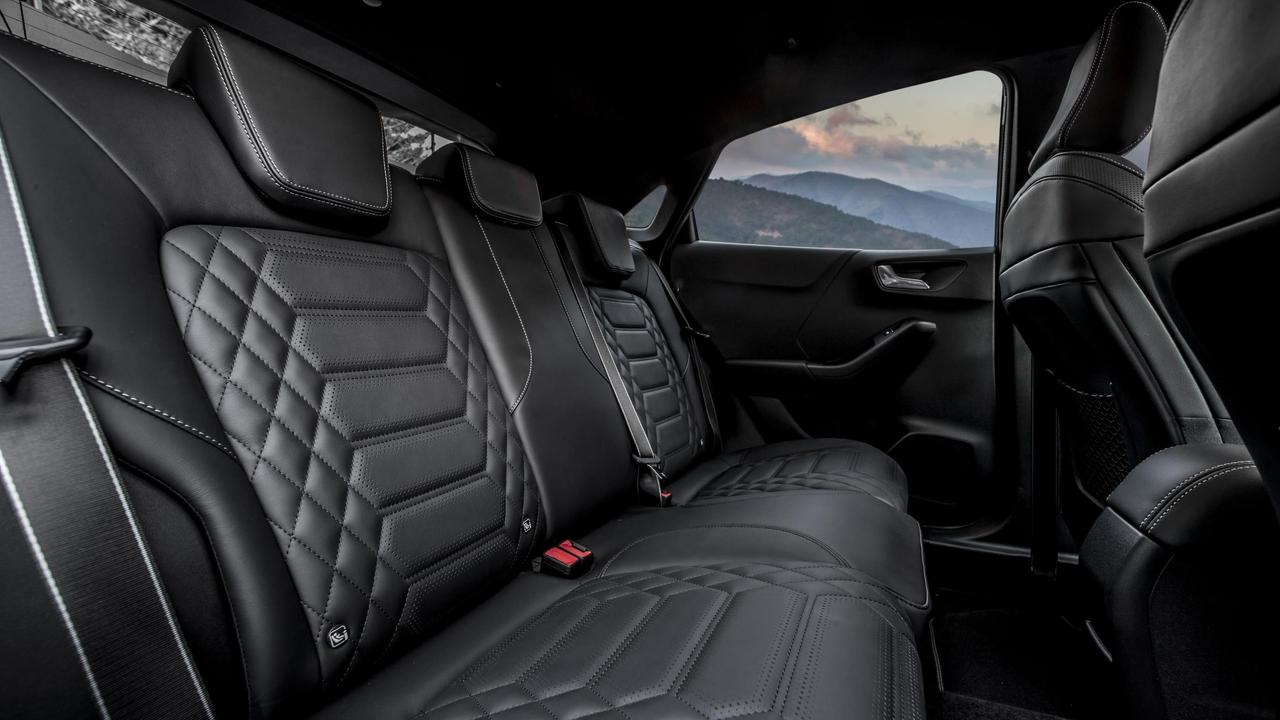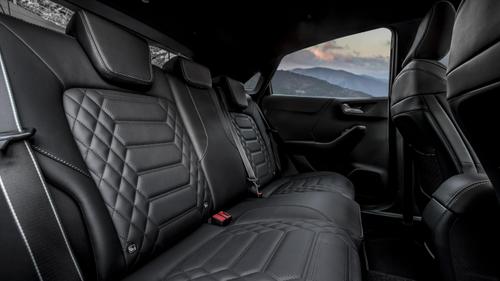

.jpeg)













Ford Puma Review
The Ford Puma is a Fiesta-sized SUV with loads of boot space.
It keeps its hatchback sibling’s fun-to-drive character. Just note that the back seats aren’t that roomy.
- Fun to drive
- Economical petrol engines
- Spacious boot with waterproof underfloor storage
- Back seats are cramped
- Interior is a bit dull
- ST model is fast but firm
Should I buy a Ford Puma?
The Ford Puma should be high on your shopping list if you’re stepping up from a supermini like the Ford Fiesta but need more boot space – or if you simply don't need a massive car. It’s good fun to drive and has a solid petrol engine line-up, and used examples are good value. You’ll just have to put up with a bit less back-seat space than its rivals – but seeing as the Puma is consistently the UK’s best-selling new car, it’s clearly not a dealbreaker for many buyers.
The Peugeot 2008 is a strong rival for the Puma, with a more interesting cabin – while the Renault Captur is comfier over bumpy roads and the Volkswagen T-Roc has more rear-seat space… but none is as fun to drive as the Ford. If you want a hybrid-powered small-SUV rival, your best bet is the Toyota Yaris Cross.
Ford freshened up the Puma in 2024, with a tweaked front end – the Ford badge is now in the grille like a clown’s nose – and an overhauled interior, featuring screens and little else. Then, in 2025, the Ford Puma Gen-E was introduced, which swaps petrol for fully electric power and adds another string to the Puma's bow.
Interior and technology

Until 2024, the Puma shared its interior with the Fiesta. These models feel reasonably modern thanks to a digital dashboard on most models (except entry-level Titanium models, which make do with regular dials), as well as a bright and reasonably sharp infotainment screen on the dashboard. You can plug your phone in via USB to activate Apple CarPlay or Android Auto, and we’d recommend you do so because your phone’s navigation and media apps will be far more responsive and easier to use than the built-in Ford systems.
You won’t find too many luxury touches in the Puma’s cabin, but it feels reasonably well put together – if a bit plasticky lower down on the doors, and with a little too much black fabric and dark trims.
The refreshed Puma has a completely redesigned cabin (pictured above). Behind the new squircle-shaped wheel there’s a larger digital instrument cluster, which has lost its cowl but now comes as standard. And, rather than designing the centre console, Ford has simply stuck on a 12-inch touchscreen that’s 50% bigger than the previous screen. New cars understandably feel more modern, but older Pumas are slightly easier to use.

Practicality

You’ll have no problems getting comfortable behind the wheel of a Puma. What you don’t get, however, is a commanding view over other traffic – you only sit a couple of centimetres higher than in a Fiesta. The view from the driver’s seat is average out the back – thick pillars at the back of the car really restrict visibility over your left shoulder, but that’s par for the course these days.
Tall adults can squeeze into the back of the Puma but won’t be comfortable for more than a short trip to the shops. Child seats fit okay, but larger seats with an Isofix base may brush up against the back of the driver’s seat if the driver is over six feet tall.
Luckily the Puma’s boot makes up for these shortcomings – its 456-litre boot is vast considering it’s not a huge car. That includes a large waterproof 80-litre bin under the boot floor called the Megabox, and it has a drain hole so you can fill it with ice to keep your picnic drinks cool… should you wish.

Engines and performance
The Puma’s engine lineup is simple – there’s a 1.0-litre petrol with either 125hp or 155hp. The 125hp version is fine if you primarily drive around town and don’t have to get to 70mph in the blink of an eye. We’d pick the 155hp version if you want a bit more real-world acceleration and a more relaxed motorway cruise.
Both engines are available with a smooth-shifting seven-speed dual-clutch automatic gearbox, but despite the Puma’s rugged looks there’s no four-wheel-drive version – all are front-drive only.

Likewise, don’t be confused by the ‘hybrid’ wording that Ford uses to describe most of the Puma’s engine choices – it’s just to explain that they have mild-hybrid technology, providing a tiny bit of extra power courtesy of a beefed-up starter motor. It won't drive on electric power alone.
Ford also makes the Puma ST, which is a hot-hatch version with 200hp courtesy of a 1.5-litre petrol engine. It’s fun, fast but has annoyingly firm suspension. The Puma ST is now available with an automatic gearbox, mated to a 170hp version of the 1.0-litre lump.
Broadening the lineup further is the Gen-E, the Puma you need to plug in. Despite never being engineered to have an electric powertrain, the Puma Gen-E works really well – it's incredibly efficient, affordable, it has an even bigger boot and it's still fun to drive. You'll start seeing these e-Pumas everywhere.

Driving and comfort
Ford is famed for making daily drivers that are enjoyable to actually drive, and the Puma’s no different. Like the Fiesta it turns into corners quickly thanks to a fast steering rack, and the three-cylinder thrum from its petrol engines makes snicking through the gears a real joy. Performance from the engines won’t set your hair alight (though the ST model may singe a few follicles), but there’s no other compact SUV that’ll put a grin on your face like the Puma does.
The downsides? Well, the suspension in ST-Line models can be a bit too firm over bumpy roads, but you won’t find the Puma an annoying car to live with, even for long motorway schleps. As we’ve mentioned, the ST model stiffens things up a fair amount, to the extent that you may be waking your kids up if you hit a small pothole.



































.jpeg&w=500&q=75)


















.jpg&w=1440&q=75)



